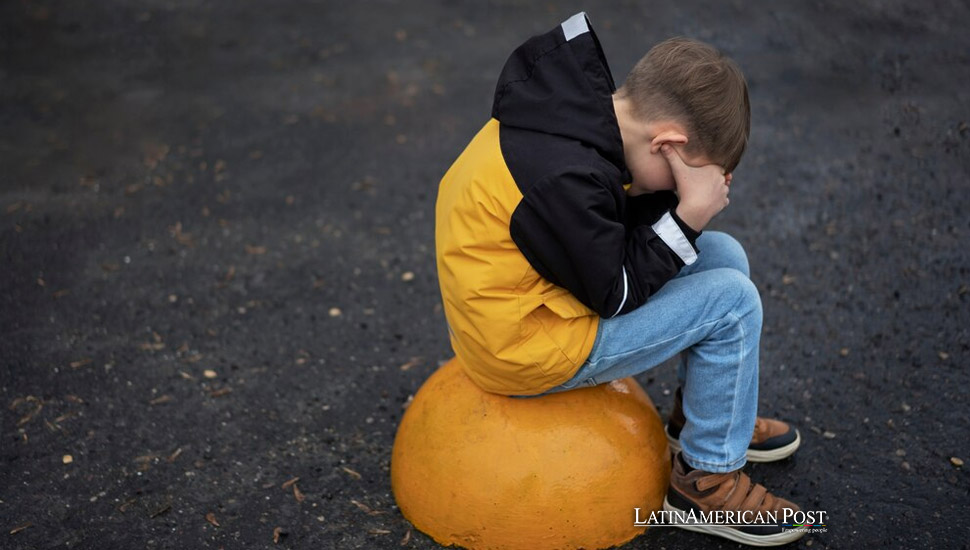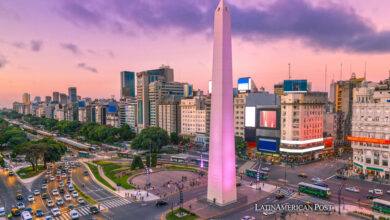Europe’s Alarming New Data Sheds Light on Latin America’s Deepening Crisis for Children

The alarming housing crisis in Europe, with 400,000 homeless children, exposes an even graver situation in Latin America, where poverty, overcrowding, and precarious living conditions are far more widespread. What’s being done, and what solutions can Latin America adopt?
If Europe Faces This Crisis, Latin America Calls for Attention
When a report reveals that 400,000 children were homeless in 2023 in Europe—one of the world’s most developed regions—it’s impossible not to wonder: If this is happening in Europe, what does that mean for Latin America? Europe is experiencing a housing and poverty crisis at a level that’s shocking for its economic status. Still, Latin America, with its historically high poverty rates, inequality, and lack of robust social safety nets, must be facing an even worse scenario.
The situation in Latin America mirrors, if not surpasses, the troubling figures coming out of the European Union and the UK. The housing crisis, child poverty, and energy insecurity are common struggles for many Latin American countries. Without action, this crisis could become catastrophic.
Child Poverty and Homelessness
Europe’s 2023 report on child homelessness and housing insecurity indicates that 14.5 million children live in homes with structural issues, like leaking roofs or mold, while millions more live in overcrowded conditions. In Latin America, the situation is just as dire, if not worse. A 2022 study revealed that 72 million people across Latin America and the Caribbean lived in poverty, many of whom are children.
In countries like Brazil and Venezuela, children bear the brunt of this poverty. Venezuela’s humanitarian crisis, worsened by hyperinflation and political turmoil, has displaced millions of families. Children, in particular, face malnutrition, inadequate housing, and limited access to education. In 2023, it was estimated that over 60% of Venezuelan children lived in extreme poverty. Likewise, in Brazil, child poverty surged in the aftermath of the COVID-19 pandemic, leaving millions in informal housing settlements known as favelas, where safety and basic services are minimal.
The housing insecurity experienced by children in Europe pales in comparison to the widespread informal housing in Latin America. In Mexico, for example, more than 6 million people lived in inadequate housing in 2022. These homes often lack essential services like clean water, sanitation, and electricity. In Peru, nearly 20% of urban households are overcrowded, placing a tremendous strain on public services and increasing health risks for children.
The lack of secure housing has dire implications beyond shelter. Children growing up in such conditions are at higher risk of health problems, malnutrition, and stunted education. Without stable homes, it’s nearly impossible for them to access the resources needed to break the cycle of poverty.
Energy Poverty
Energy poverty, a pressing issue in Europe, is even more pervasive in Latin America, where energy insecurity affects millions of households. The 2023 European report highlighted that 10% of households across Europe were unable to afford adequate heating or cooling. In Latin America, this percentage is far higher. In countries like Honduras and Nicaragua, where poverty rates are high, families often rely on wood or charcoal for cooking, resulting in health problems due to indoor air pollution.
In Bolivia, energy poverty affects more than a third of rural households. The use of outdated and inefficient heating methods not only poses health risks but also contributes to environmental degradation. Rural communities, in particular, face a lack of access to modern energy services, which exacerbates poverty and limits economic opportunities.
Brazil, despite being an energy-rich country, faces stark inequality when it comes to energy access. Millions of households, especially in remote areas, experience frequent blackouts or rely on expensive and inefficient energy sources. With energy prices rising globally, the poorest households are forced to spend a disproportionate amount of their income on electricity and gas, deepening their financial insecurity.
In Argentina, high inflation and the ongoing economic crisis have resulted in energy costs that are out of reach for many families. The government’s attempts to subsidize energy costs have not been sufficient to address the growing needs of low-income households, leaving many without consistent electricity or gas access.
The Rise in Property Prices and Inequality
The European report also highlights rising housing costs, with an average 16.6% increase in housing prices between 2020 and 2023. For many Latin American countries, housing costs have skyrocketed even more dramatically, driving up inequality and leaving the poorest families without access to affordable homes.
In Argentina, housing prices in Buenos Aires surged by nearly 25% in 2023, pushing more families into informal settlements. These makeshift homes lack legal recognition, which means residents have no access to essential services like water, sewage, or electricity. With inflation eroding wages, it’s becoming increasingly difficult for families to afford even the most basic housing.
Chile, one of the region’s more developed economies, has seen a sharp rise in property prices as well. In Santiago, the average cost of housing has increased by over 50% in the last five years. This surge has pushed many working-class families out of the city center and into overcrowded, poorly constructed housing on the outskirts. The lack of affordable housing is one of the country’s most pressing issues, with tens of thousands of people living in precarious conditions.
Colombia, another country with a growing middle class, has also experienced rapid increases in housing prices, particularly in cities like Bogotá and Medellín. While the government has implemented programs to encourage affordable housing development, demand far outstrips supply. This has led to the rise of informal housing settlements, where residents live without legal protections or access to public services.
Learning from Successful Examples
While the crisis is severe, there are successful examples across Latin America that show how the housing, energy, and child poverty crises can be addressed. Uruguay, for instance, has made significant strides in reducing poverty and improving housing conditions. The country implemented a program to build social housing for low-income families, with a focus on sustainability and community development. This program, combined with efforts to expand access to education and healthcare, has helped reduce the country’s poverty rate to one of the lowest in the region.
Chile has also made progress in addressing its housing crisis through a program known as Subsidio Habitacional, which provides financial assistance to low-income families to purchase or improve their homes. This program has helped thousands of families move out of informal settlements and into legal housing with access to basic services. While challenges remain, particularly in terms of housing affordability, Chile’s approach has been recognized as a model for other countries in the region.
Another key solution is energy reform. Costa Rica, a country that has long been a leader in environmental sustainability, has invested heavily in renewable energy. Today, over 98% of Costa Rica’s electricity is generated from renewable sources, primarily hydropower. The country’s focus on clean energy has not only reduced energy poverty but has also positioned it as a global leader in sustainable development.
Finally, Colombia’s recent efforts to address child poverty through social protection programs offer hope. The government’s Familias en Acción program provides conditional cash transfers to low-income families, helping them access education and healthcare. This program has lifted millions out of poverty and significantly reduced child malnutrition rates. Expanding such initiatives across the region could help mitigate the devastating effects of poverty and homelessness on Latin America’s most vulnerable populations.
Urgent Action Needed for Latin America’s Future
If Europe, with its vast resources and social safety nets, is grappling with an escalating crisis of child homelessness, energy poverty, and rising housing costs, Latin America is likely facing an even grimmer reality. The structural inequalities in the region, combined with widespread poverty and weak social protection systems, make the challenges even more daunting.
Yet, solutions do exist. Uruguay’s success in reducing poverty, Costa Rica’s commitment to renewable energy, and Chile’s social housing programs offer models that other countries can adopt. But more must be done. Governments across Latin America need to prioritize housing, energy access, and child poverty, while also addressing the root causes of inequality.
Also read: The Untold Story Behind Latin America’s Deadliest Airline Crash
The current trends, if left unchecked, will only worsen. The time for action is now, and Latin American governments must commit to bold reforms that provide their citizens with the security, dignity, and opportunity they deserve.





